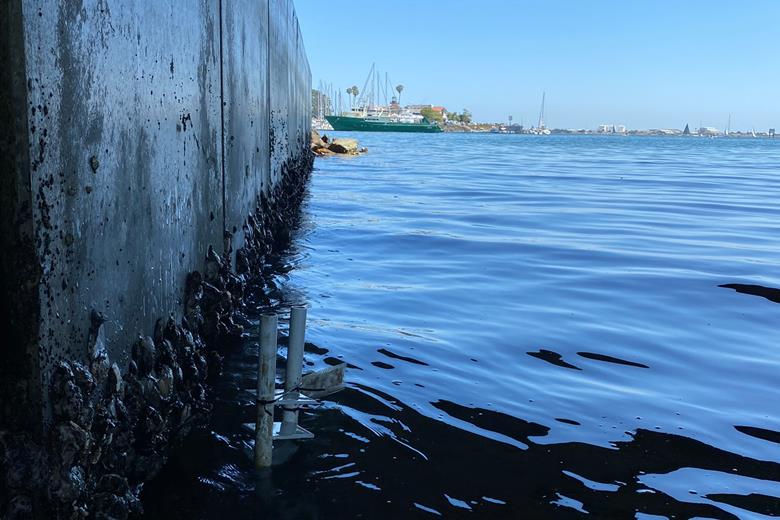Oysters succumb to deadly viral outbreak - but only at higher water temperatures

Oyster farmers in San Diego Bay will be able to protect them from deadly viral outbreaks by growing them at times when the water is cooler, thanks to the findings of a study by Scripps Institution of Oceanography scientists.
The study, ’Temperature and microbe mediated impacts of the San Diego Bay ostreid herpesvirus (OsHV-1) microvariant on juvenile Pacific oysters’ recently appeared in Sustainable Microbiology, an Applied Microbiology International publication.
READ MORE: Tropical red seaweed protects Ostrea edulis larvae against pathogen
READ MORE: New test spots seafood pathogen in just 30 minutes
The scientists found that a virus (OsHV-1) responsible for killing farmed oysters in San Diego Bay becomes a threat with higher water temperatures and promotes a huge overhaul in the bacterial community (microbiome) within these oysters.
Dramatic mortality event
Outlining what spurred the research, corresponding author Dr Emily Kunselman said: “In San Diego Bay, a new oyster farm - the first of its kind there - saw a dramatic mortality event in 2018 in which about 99% of all oysters died. The diagnosis was OsHV-1, which is a virus known for mass mortality events around the world.
“In order to better manage this virus, we set out to test the susceptibility of oysters to this virus at different temperatures, which would inform oyster farmers of the best and worst time of year/seasons to grow oysters.
“From the San Diego Bay OsHV-1 outbreak in 2018, researchers were able to obtain a homogenate of the virus, which was kept frozen at -80 Celsius and could be diluted and used to inject viral particles directly into oysters.
Mimicking infection route
“In order to mimic a more natural route of infection by the virus, the injected oysters were placed in sterile seawater for 48 hours, in which time the virus replicated within the oyster and transferred back into the seawater, and the now infected seawater could be used to expose new ‘naive’ oysters to the virus,” Dr Kunselman said.
“These naive oysters came from a farm outside of San Diego bay to ensure they were naive to OsHV-1 and were acclimated to the temperatures experienced within San Diego bay over a typical year (15, 18, 21 and 24 degrees Celsius - ie ranging from 59F to 75F).
“Once the oysters were exposed to the virus infected seawater at the 4 different temperatures, scientists monitored the tanks of oysters every day to determine if any oysters had died.”
Death of oysters
Oysters started dying at 24 degrees Celsius after just 1 day, at 21 degrees Celsius after 3 days, and at 18 degrees Celsius after 6 days. By the end of a 16 day monitoring period, over 75% of the oysters at 18 through 24 degrees Celsius had died. However, none of the oysters held at 15 degrees Celsius died.
The authors concluded that colder temperatures offered a protective effect from the virus, while higher water temperatures resulted in severe disease and mortality. They were interested in the impact of this deadly virus on the microbiome within the oysters, so the experiment was repeated at 21°C, but this time the microbiome of oysters was characterized before the viral exposure, after exposure, when the oysters showed signs of disease, and immediately after death.
Dramatic shift
The bacterial community underwent a dramatic shift after exposure, with the bacterial groups Arcobacter, Vibrio and Amphritea increasing in response. This altered community was present in exposed oysters, whether they appeared diseased or not. Once the oysters died, the community shifted even more favorably toward these bacteria along with Pseudoalteromonas. The emergence of these bacteria is likely a sign of weakening of the oysters’ immune system.
“We were surprised by the complete lack of mortality at 15°C, suggesting the inability of the virus to completely kill oysters at these low temperatures. We were also surprised that, despite differences in geographic location and OsHV-1 variant type, we saw the same bacteria increase in oysters in response to the virus as have been documented in France and Australia,” Dr Kunselman said.
“Oyster farmers in San Diego Bay may now manage their oyster growing seasons based on the rough thresholds outlined by this paper, suggesting that consistent temperatures above 18°C can put oysters at risk of contracting this virus. This will prevent major disease outbreaks which include both virus and bacterial threats as well as minimize oyster loss and thereby economic loss due to disease.”
Interesting observation
Another interesting observation is that San Diego Bay experiences temperatures above 18°C for over half of the year, but oysters that have been introduced to the bay year after year do not always get infected. In fact, the virus was only documented one additional time after 2018.
“Therefore, the next steps in this research need to focus on which additional, necessary factors can lead to outbreak of OsHV-1 in San Diego bay, because temperature must not be the only trigger for the virus,” Dr Kunselman said.
“OsHV-1 is also a herpesvirus, which can remain latent and undetectable. The source or reservoir for the virus in San Diego is unknown. If we could determine what the source is, we could potentially uncover additional factors that cause an outbreak.”
Study design
This study was designed and led by now graduated Dr. Emily Kunselman as part of her PhD dissertation work, with the guidance of various mentors (Burge, Allard, Mitta and Petton) and exceptional assistance of undergraduate (now graduated) students (Manrique, Daniel).
Dr. Kunselman received various student research awards from the American Malacological Society, Conchologists of America and the Western Society of Malacologists, which went directly to supplies and sequencing costs to support her new, independent research program as a student.
’Temperature and microbe mediated impacts of the San Diego Bay ostreid herpesvirus (OsHV-1) microvariant on juvenile Pacific oysters’ appears in Sustainable Microbiology.
